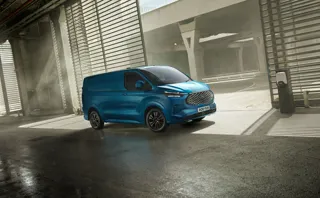Ford is trialling a new geofencing technology to prevent vehicles from speeding in urban areas.
The technology creates a virtual area where vehicles slow down, rather than relying on drivers spotting signs that may be on unfamiliar routes, or overgrown.
“Connected vehicle technology has the proven potential to help make everyday driving easier and safer to benefit everyone, not just the person behind the wheel,” said Michael Huynh, manager, City Engagement Germany, Ford of Europe. “Geofencing can ensure speeds are reduced where – and even when – necessary to help improve safety and create a more pleasant environment.”
The trial is the result of a collaboration between the Ford City Engagement team, city officials in Cologne and Aachen, and Ford software engineers in Palo Alto, in the US. Together with colleagues in Aachen, the Palo Alto engineers developed technology that connects the vehicle to the geofencing system for GPS tracking and data exchange.
The driver receives the information via the dashboard display cluster, with the new speed limit flashing below the current speed. The vehicle automatically reduces speed in line with the geofenced zone. The driver can override the system and deactivate the speed limit control at any time.
In the future, Ford’s Geofencing Speed Limit Control system could enable drivers to set their own geofencing zones at speeds as low as 20 km/h, including at depots and private facilities. Speed limits could also be set dynamically, to take into account local hazards, temporary road works and the time of day.
The trial runs until March 2023 and is part of broader research initiatives putting pre-production and prototype Ford E-Transit vehicles to the test across a variety of intensive real-world operating scenarios, including in the postal, municipal and utilities services, as well as last mile and grocery delivery sectors within France, Germany, Italy, the Netherlands, Norway and the UK.
Ford is also using geofencing technology to improve air quality in cities, ensuring that the Ford Transit Custom plug-in hybrid electric vehicle runs automatically in zero-emission electric-drive mode whenever the vehicle enters a low‑emission zone.






















Login to comment
Comments
No comments have been made yet.